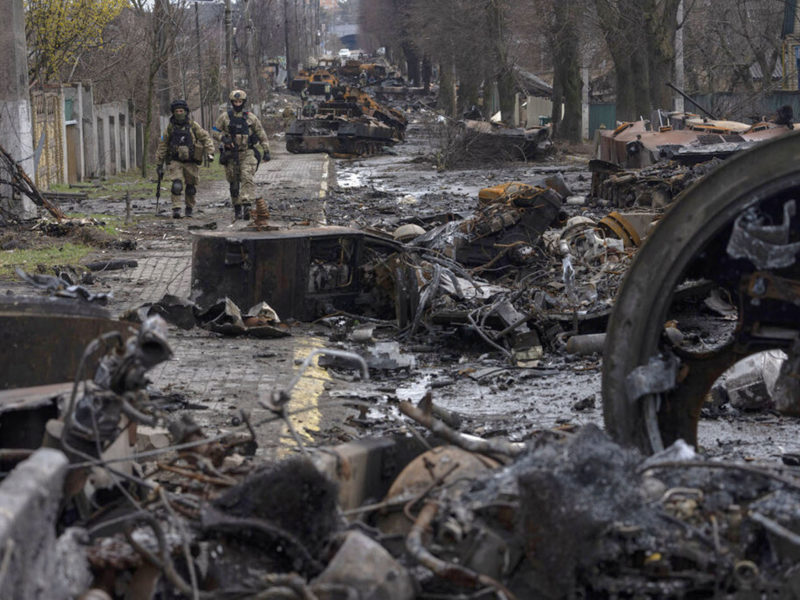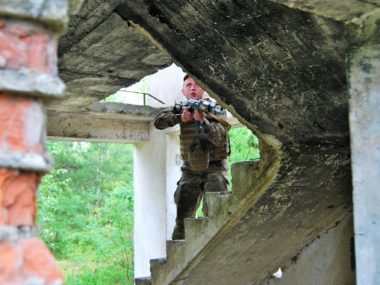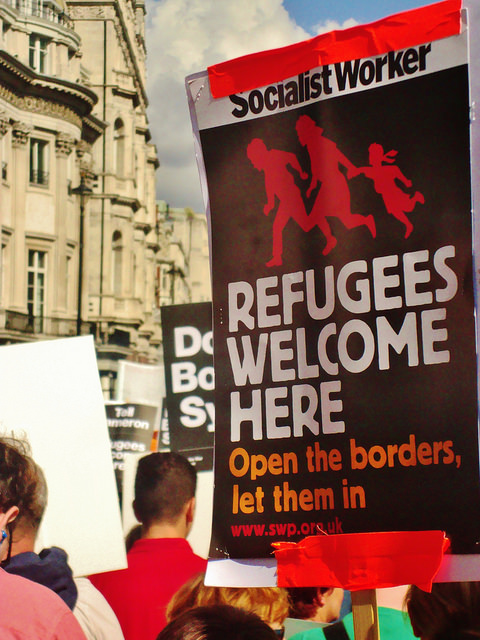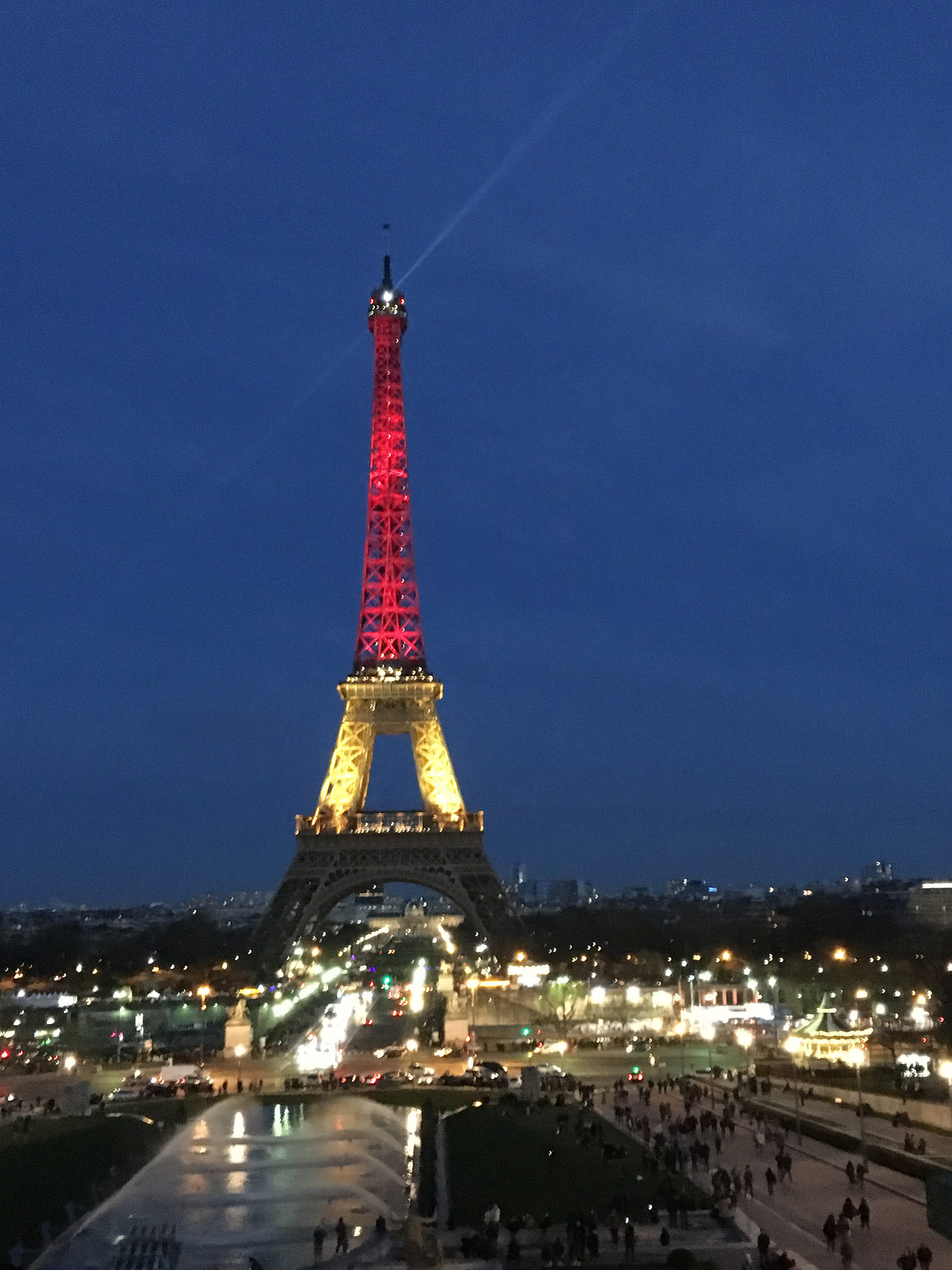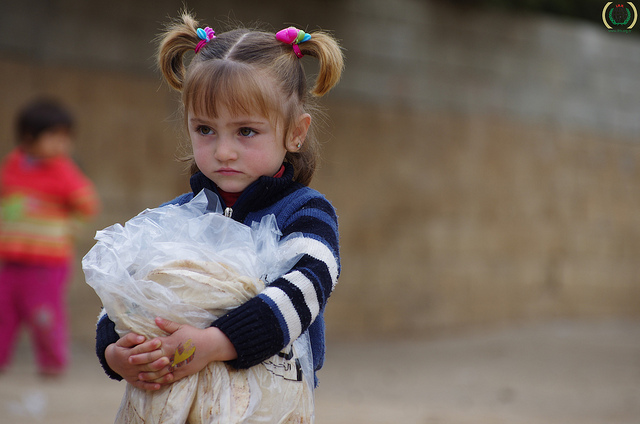In this collection, PVG contributors reflect on the war and its consequences, including what justice might look like and how the war might end.
Will Justice Ever Be Served?
Justice could mean any number of things. Perhaps it is Ukraine winning the war—a war that no one gave Ukraine a chance of winning at the outset. Maybe it is not only Ukraine winning but also recovering Crimea. Maybe it is Russia continuing to suffer sanctions and being forced to contribute to reparations and the rebuilding of Ukraine. Maybe it includes a significant number of costs, including lots of dead Russian soldiers or massive flight and a brain drain of high-earning and high-status individuals. Maybe it means ICC [International Criminal Court] indictments of Putin, Russian military officials, and soldiers on charges of war crimes. Maybe it means outcomes that were the very opposite of what Putin intended, such as fast-tracking Ukraine for European Union and NATO membership. Maybe it means seizing the assets of Putin and his cronies, and using them as reparations. Maybe it means that Putin meets a Mussolini-type ending. Justice, in these ways, means just desserts—that Russia somehow suffers the appropriate punishment for its invasion and subsequent crimes.
Whether Ukraine is able to score a knock-out victory will depend on the West continuing to supply Ukraine’s financial, intelligence, and military needs. It is not something that Ukraine can do on its own. The same can be said about reparations; it will require international cooperation of the highest order and among the rich countries and the global economic elite. This might be harder to pull off than a military victory.
And even harder will be punishing those who committed war crimes. There is a likelihood that any negotiated settlement will have to include some kind of amnesty for those who are accused of war crimes. At least that will be the Russian position, a position vehemently opposed by the Ukrainians. But it is one thing for a negotiated settlement to declare amnesty, quite another for the ICC to follow suit.
One way to help the case that war crimes should be punished is by making sure that the extent of the crimes is never lost. I am speaking about more than holding to account those who are responsible for the mass graves and the summary executions. War crimes include the Ukrainians who were disappeared into Russia. They include gender-based violence. But the war crimes are not simply a minor part of Russian war strategy—they are Russian strategy. The continuous barrages of cities, civilians, and infrastructure are often characterized as if they are just another phase of the war campaign. These missile attacks directed at civilians are war crimes. They should be repeatedly described as such. It will drum home the very brutality and inhumanity that have defined the Russian campaign, the current Russian way of war.
Finding some kind of justice will be important not only to “teach Russia a lesson” but also to warn those in the future who might be tempted to make war crimes part of their military strategy that there will be a price for their inhumanity and rampant and wanton violations of international humanitarian law. The outrage is not only that Russia launched a war of aggression but also that it waged war in the most brutal manner imaginable. Russia is not the only offender; there are others. And these offenses will not stop with Ukraine. Many states are simply shrugging off international humanitarian law. A major reason is because there have been no enforcement mechanisms or punishment. This must end.
Implications of a Protracted and Internationalized Conflict
During the initial phase of Russia’s invasion, many observers expected more decisive outcomes than actually occurred. Here are three, by now well-known, but initially unexpected developments:
- Russia’s drive for an initial decapitation strike on Kyiv failed after appearing on the brink of success. Ukrainian resolve and intelligence capabilities exceeded expectations. Russian training and logistics did not meet expectations.
- Mass and elite threats in Russia have (so far) not eroded Vladimir Putin’s grip on power, despite early pronouncements to the contrary. Antiwar mobilization was repressed, and widespread replacement of top military officials has kept possibly discontented elites away from power.
- Peace talks were unsuccessful, as both sides’ negotiating positions (and expectations for the conflict outcome) remained far apart. Russia has redoubled its commitment to the war with partial mobilization. Ukraine has sought greater and more sophisticated military aid from its allies.
What are the political implications of a conflict more protracted than expected? The durability of the Ukrainian government and the autocratic survival strategies of Putin’s regime will both be tested, as will the domestic coalitions in the developed democracies giving aid to Ukraine. Yet, as late 2022 public opinion research from Gallup indicated, a supermajority of the Ukrainian public supported fighting the war until all territory lost to Russia was recaptured. Around the same time, Russian support for the war, while high, showed cracks. A (flawed) democracy with powerful patrons may yet retain an advantage even against a numerically superior autocratic adversary.
On human rights and justice, and related to my previous PVGlance post on the topic, the consequences of civilians’ and other non-state actors’ contributions to violence will only deepen with a protracted conflict. As territory changes hands, sometimes repeatedly, enmities and violent recriminations among pro-Russian and pro-Ukrainian civilians will escalate. Greater civilian involvement in violence complicates post-conflict truth, justice, and reconciliation as these intergroup hostilities solidify.
NATO Works For Its Members… And Somewhat for Non-Members
One of the most important dimensions of the Ukraine-Russia war is how limited it has been. While there has been much concern about escalation, the war has been almost entirely contained to Ukrainian and Russian territory. One errant missile hit Poland in November 2022, and very recently, missiles fired by Russian warships flew over Moldovan airspace. While the discussion continues of whether and how new weapons deliveries to Ukraine might lead to escalation, thus far, the war itself has remained limited. While there are many factors involved, one element is clear: NATO works. Russia is deterred from attacking NATO members with conventional weapons (cyberwar and disinformation are something else entirely).
NATO members, by publicly shipping weapons to Ukraine, have made themselves targets, yet they have not been targeted. Two different fears are likely restraining Vladimir Putin and the Russian forces. First, while Putin has rattled his nuclear sabre, he does understand that a larger war with NATO could lead to catastrophe for all. Second, and perhaps more directly right now, NATO has stayed out of the war, but that restraint would be dramatically reduced if Russia hit NATO territory. As much as NATO has been deterred from attacking Russian forces in Ukraine by the fear of escalation, once some escalation occurs, NATO might unleash its forces to devastating effect. There was some discussion of how to respond if Russia used a single nuclear weapon in Ukraine, and one possible response would have been for NATO to respond conventionally—to take out Russia’s Black Sea fleet. That option is still on the board if Russia expands the war into NATO countries.
While one could argue that NATO’s restraint has provided Russia a free hand in Ukraine, the deterrent effect NATO has had on Russia beyond NATO has mattered greatly, freeing many members of the alliance to provide far more arms, ammunition, and other support than one might have imagined last February.
Is Ukraine Ripe for Resolution? Not Now, Not Soon
By Timothy Sisk
Following the theory of ripeness so well-developed by I. William Zartman, two conditions are ostensibly necessary for the termination of the Ukraine war, absent the unlikely non-consensual intervention of outside forces (e.g., a United Nations or other multilateral “peace enforcement” operation, unlikely given that aggressor Russia retains its permanent seat on the United Nations Security Council).
The first is a “mutually hurting stalemate” in which no side can definitively escalate its way out of the bloody imbroglio. Importantly, such a condition requires not just an ululating stalemate, as the first year of the conflict has seemingly produced, but a “long shadow of the future” in which further escalation is self-defeating and deemed so by both protagonists. With claims that Russia will attempt again to take Kviv in year two, for Russia such a condition appears not to exist under the current leadership; for Ukraine, the 2022 offensive that rolled back the Russian invasion also limits the perception that the conflict is unwinnable—it wants, and needs, Crimea back. Thus, a stalemate may persist without settlement, leading to intractable conflict and what the late eminent scholar of war termination studies, Roy Licklider, describes as a “long war.”
The second condition is a “way out.” That is, there must be a political solution, in principle as in a framework agreement, or any cease-fire will be at best ephemeral. The “way out” concept means that the essential elements of any peace agreement-outcome must be clear, especially the ultimate political dispensation of the disputed territories. This condition also appears unlikely to be met, as the only outcome of the conflict than can be plausibly acceptable to Kviv is the restoration of full sovereignty of all disputed territories.
Unless both these Zartmanesque ripeness conditions are met, ripeness theory suggests the conflict is likely to continue as a costly military stalemate, ad infinitum. At best a war-termination outcome is one of an informal “frozen conflict,” much like others in the region or in the world’s most long-running conflict: over Kashmir, which initially escalated into violence in 1948.
Failed Coercion, Domestic Politics, and the Traumatic Costs of War
We are fast approaching the one-year anniversary of the Russian invasion of Ukraine. It’s a sobering time to reflect both on the political implications of the war, and the awful suffering endured by the Ukrainian people. Before the war, I spent quite a bit of time in Ukraine conducting research for my forthcoming book on Nasty Politics. One of the things that struck me from a pure power politics perspective, is how strategically costly and terrible Putin’s strategy towards Ukraine has been stretching back to the Euromaidan revolution in 2013-2014. Before the Euromaidan, pro-Russian parties were regularly some of the largest parties in the Rada (Ukraine Parliament), and also controlled Ukraine’s presidency (under Leonid Kuchma and Viktor Yanukovych). Yet, one of the ironies of Putin’s strategy in Ukraine since 2014—backing separatists, annexing Crimea, and fomenting the War in Donbas—is that it has reduced Russia’s tools to influence Ukraine’s domestic politics. The 2022 invasion and war has only accelerated these trends, with several leaders of the pro-Russian parties charged with treason and banned from politics, and more moderate remnants of the pro-Russian parties drifting closer to Kyiv’s orbit than Moscow. Putin’s decision to invade was the continuation of his failed strategy to control Ukraine through coercion. The irony is that he has only forged a stronger Ukrainian identity.
I am curious to see what happens when domestic politics eventually return to Kyiv, and Zelensky’s rule will be challenged. Just months before the invasion former Ukrainian President Petro Poroshenko was charged with treason for allegedly selling coal to Russian-backed separatists in Donbas during his presidency. The war put the treason charges on hold. But Zelensky has recently resumed his crackdown on corruption and signaled his willingness to resume his battle against Ukraine’s oligarchs. It will be interesting to see how the war reshapes Ukraine’s domestic politics and partisanship. Before the war, Ukrainian political parties were ephemeral, built around individual identities, and partisanship was weak. Yet again the irony is that despite Putin’s rhetoric that Ukraine’s statehood is a “fiction,” Russia’s war has strengthened Ukraine’s identity, the very thing he sought to destroy. This new Ukrainian identity will likely reshape Ukraine’s politics in wars to come.
Finally, it’s important to note that Ukrainians have been living with war for nearly eight years stretching back to 2014 and the War in Donbas. The 2022 Russian invasion is the most intense iteration of this. Nearly one in five Ukrainians is currently a refugee, and estimates of the military casualties stretch to more than 200,000. Those Ukrainians that have remained in Ukraine have experienced air sirens, bombings, brutal military assaults, and war crimes. I have several close friends who have endured lengthy power outages, regularly had to run to shelters, suffered anxiety over when the next air strike will happen, and are coping with the uncertainty of the future of war. This trauma will have long-term social, political, and economic consequences both for both individuals and Ukraine at large. Ukrainians want and deserve what everyone wants: freedom, prosperity, safety, and sovereignty.
Restorative Nationalism and Conflict: Taking Nationalists Even More Seriously
By Lars-Erik Cederman and Yannick Pengl
On February 24, 2022, Russia’s invasion of Ukraine shocked many observers in the West. A year later, Putin exhibits no sign of wanting to dampen his nationalist fervor. Trying to make sense of his actions, Cederman, Schvitz and Rüegger referred to previous research, which shows that ethnic nations’ territorial fragmentation, especially in the case of increases such as that following the collapse of the USSR, increases the risk of civil conflicts along irredentist lines.
Extending these findings further back in European history, our most recent research explores the link between historical grievances and conflict, not only within, but also between states. In a working paper, co-authored with Carl Müller-Crepon and Luc Girardin, we show that incongruent borders are more likely to be contested by violent means where nationalist rulers can contrast current division and alien rule with supposedly more unified and independent “golden ages” in the past. Our analyses reveal that European states have been significantly more likely to make territorial claims or fight against neighbors hosting powerless ethnic kin when past state borders incorporated larger parts of territory currently inhabited by the ethnic nation than the contemporary rump state.
Putin has repeatedly lamented Russia’s lost unity resulting from the breakup of the Soviet Union and his essays and speeches reveal a motivation to restore Tsarist imperial glory. He and many other nationalist leaders go back centuries to unearth medieval kingdoms, early modern territorial states, or empires that allegedly satisfied the nationalist ideals of ethnic unity and home rule. Projecting modern notions of national consciousness onto pre-modern populations and constructing lines of continuity across centuries, “restorative nationalism” thus blends historical facts and fiction into self-serving narratives aimed at contemporary audiences.
Interstate conflict has become an extremely rare phenomenon in post-1945 Europe. In this sense, Russia’s territorial revisionism in Ukraine does, in fact, throw us back to the 19th and early 20th centuries. Against this backdrop, the outcome of the war in Ukraine is crucial for the future world order. Should Russia be seen as a winner there is a risk that revisionist nationalists elsewhere will take notice. Most ominously, China’s irredentist desire to “reunify” Taiwan increases the risk of major war. Within Europe, Serbia and Hungary are expressing acute grievances around ethnic division and lost unity. For these reasons, continued political and military support for Ukraine is critical.
Russia’s Efforts to Influence Global Public Opinion
By Noel Foster
Vladimir Putin’s speech before the Federal Assembly—both houses of Russia’s parliament, the Duma—on February 21 bookmarked a year of information and misinformation since the February 24, 2022 invasion. A year after the speech setting the stage for his invasion of Ukraine, Putin’s repetitive and often redundant, with no attempt at outlining a new strategy for victory in the war to the Russian public, Putin’s remarks underscored his stalemate.
If anything, the lack of change in Putin’s talking points underscores Moscow’s difficulty in finding strategic narratives that resonate with foreign audiences and mobilize them in opposing support for Ukraine. In contrast with its COVID diplomacy and rapidly adapting messaging following the outbreak of the pandemic, the Kremlin’s information campaign on Ukraine has stalled. After all, in the course of a year, Moscow has cycled through arguments of the threat of Ukrainian NATO membership, Ukrainian attacks on civilians, fascism and neo-Nazism among Ukraine’s elected officials, and even curious claims of Ukrainian biological or radiological capabilities.
In part, these Russian narratives have failed because they lack the hallmarks of previous Russian strategic narratives, which were usually grounded in facts, not fake news, could reasonably explain current events, and could appear to a wide ideological and international spectrum of audiences. Thus, even in countries where populations largely opposed Russian policy, Russian strategic narratives proved effective on swathes of the population.
It might thus appear easy to dismiss Putin’s remarks, as the aging autocrat promised considerable support to veterans and assured civilians that Russia’s economy would outperform that of the West, or as he resorted to tropes of Ukrainian “Nazis” threatening Russia with “biolabs.” Even his announcement that Russia would suspend its participation in the New START nuclear arms control agreement appeared calculated to play into a year-long campaign of nuclear rhetoric aimed at unnerving his opponents.
Yet while most readers may be skeptical towards Moscow’s messaging and attuned to anti-Kremlin sentiment that pervades most of the West, this in itself is an artifact of the informational bubble that has arisen in the past year. Throughout much of the world, sentiment towards the war has been at best ambivalent, and in some regions, such as West Africa, public opinion trends favor the Kremlin. Separate from perceptions of Russia’s brutality and failure in its invasion, Moscow is edging out French influence in swathes of the Sahel and in Central Africa, for instance. In general, non-Western audiences express the strongest desire for the war to end quickly, even at the expense of Ukrainian losses in territory, and are more likely to view Russia as an ally or a necessary partner. If the Kremlin is not winning its global informational campaign, it is not losing it either. Though the divergence in public opinion between BRICS countries and the West appears a marginal gain for the Kremlin, it demonstrates how split global public opinion has become as economic stressors and tensions over strategic competition between the US and China have shaped opinion in other regions, not always in Washington’s favor. However fraught in its execution, the West has converged on a view of Russia’s invasion of Ukraine and political course of action. As BRICS states and regional leaders seek to redefine their path outside of the West’s bandwagoning, Russia’s messaging on Ukraine shows how differently the West and the rest perceive the same events and form attitudes and preferences.
Maintaining Control of Reality in Putin’s Russia
By Thomas Maher and Jennifer Earl
Everything is different, but nothing has changed. Last year we wrote about how the Russian state used censorship (e.g., laws restricting how citizens could talk about the war) and information influence techniques (e.g., pushing the Z meme and other pro-Putin messages) to shape its own “reality” about Ukraine. A year later, much has changed and much more has remained the same as tens of thousands of Russians continue to oppose the war in Ukraine and millions more see it as a necessary “defense” against Western aggression.
In the change category, the war has lasted longer than the Russians expected, weakening Putin’s control over Russia’s reality. Putin eventually acknowledged the war and its likely protracted nature; a civilian draft led to public backlash, protests, and emigration efforts. This strained Putin’s ability to “control the perception of reality,” but has not broken it.
In the continuity category, the distraction and disinformation machines that champion small changes and victories in Ukraine, demonize domestic protest, and amplify voices (and particularly Western voices like Tucker Carlson) that portray the war as a war of western aggression have continued. Russia continues to repress dissent with laws prohibiting “spreading disinformation” and by arresting protesters for attending rallies.
What does this teach us? We draw two insights from this year-to-year comparison. First, in a reality versus digital repression face-off, Russian domestic support for the war has declined from its initial highs but still polls around 70 percent approval, showing the relative, but not total, effectiveness of Russian digital repression. That Russian support can stay so high despite big shifts in the reality of the war speaks to the robustness of the intersection between different types of digital repression as well as our need to understand the relationship between disparate forms of digital repression. Leaders like Putin don’t so much stop repressing as they change their portfolio of repression when reality leans in. Second, the intelligence community and policymakers must begin to understand that larger portfolio, the dynamics of different types of digital repression, and the interrelationships between them in Russia (and globally). We recently introduced a typology of digital repression that is designed to help academics, the intelligence community, and policy-makers understand these shifts and, hopefully, counteract them. The US will be ill-equipped to respond to digital repression until leaders better parse the tools in Putin’s repressive arsenal, and understand how different combinations work (or don’t, or backfire).
Challenges in Defeating Russia
By Stephen Shulman and Stephen Bloom
The start of the Russian-Ukrainian war signified the abject failure of two strategies of coercive diplomacy: Russia’s attempt to compel the West to reverse the extension of its military power into Ukraine, and the West’s attempt to deter a Russian invasion of Ukraine while refusing substantial concessions. As both sides now seek to compel their opponent to give up the fight and accede to their political demands, the West must have no illusions of the challenges it faces.
All four factors we earlier identified as promoting strong Russian incentives to use force absent NATO concessions now create even more powerful incentives for Russia to accept high risks and pay high costs to prosecute the war and achieve at least some of its original political aims. First, the war has greatly intensified, rather than curtailed, military cooperation between NATO and Ukraine. Future levels will likely be high as well, especially following any great Russian military defeat in the war. This, combined with the likely inclusion of Sweden and Finland into NATO and Western commitments to increased military spending in the future, sharply exacerbate the perceived security threat to Russia by NATO.
Second, the threats to Russian national identity are far worse now than before the war. Russian national status and prestige have suffered a crushing blow due to a series of surprising battlefield setbacks and brutal treatment of Ukrainian civilians. Demands for reparations and war crime trials from the West/Ukraine in the event of Russia’s defeat also threaten national humiliation. Prior trends in linguistic and cultural Ukrainization in Ukraine will henceforth accelerate rapidly, undermining Russia’s claim to be the protector of Russians and Russian culture in the near abroad.
Additionally, Russian military defeat raises dramatically the probability that post-war Ukraine will become deeply integrated economically and politically with the West and subject to its externally imposed reforms during reconstruction. The demonstration effect of a democratic and prosperous Ukraine would constitute an unprecedented threat to the legitimacy of Russian authoritarianism.
Finally, the war has greatly raised the stakes for Putin’s reputation, historical legacy, freedom, and possibly life. Almost certainly he realizes that unless he can reasonably claim some kind of military victory in this war, he will be held personally accountable by large swaths of Russia’s population for the great costs in blood and treasure expended for naught.
Western strategy thus confronts a state, nation, regime, and autocrat strongly incentivized to avoid military defeat. It is not just Vladimir Putin who is likely prepared, if necessary, to mobilize much more of Russia’s heretofore untapped economic and military potential to prosecute the war.
Stephen Shulman is an associate professor of political science at Southern Illinois University. Stephen Bloom is an associate professor of political science and director of graduate studies at Southern Illinois University.

